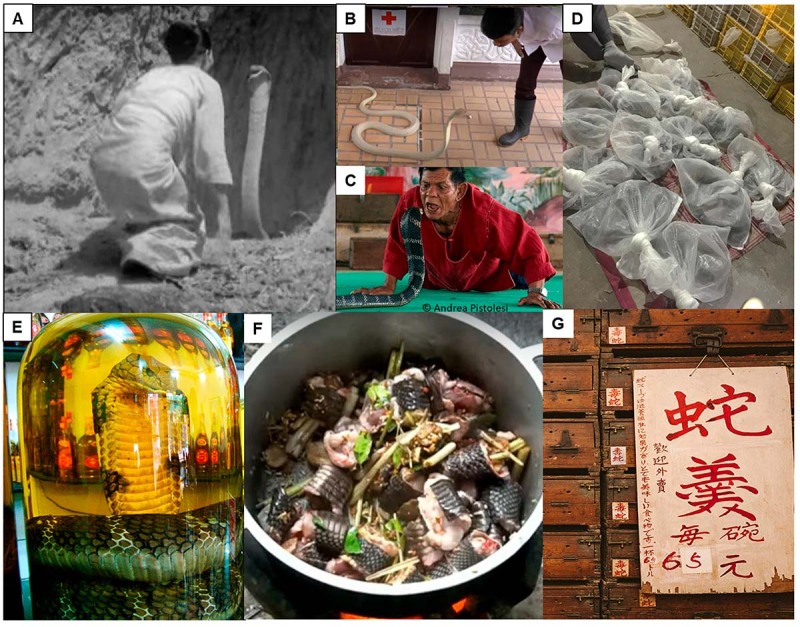Figure 3. Relationship between King Cobra and humans. (A) Footage from ‘Wheels across India’ (Armand Denis, Leila Roosevelt; 1940) of a religious ceremony held in Burma (Myanmar) involving a priestess attempting to kiss a King Cobra on its head three times to obtain the favor of the Snake God of Fertility. (B) Snake educational show at the snake farm of Queen Saovabha Memorial Institute, Bangkok (screenshot from a YouTube clip: www.youtube.com/watch?v=fWh-XOKJgxM). (C) Snake show as a touristic attraction: performer at the Ban Khok Sa-nga King Cobra Village (Thailand) attempting to hold the King Cobra’s head in his mouth (photo by Andrea Pistolesi, https://andreapistolesi.wordpress.com/2010/02/23/who-is-the-snake-who-is-the-victim/). (D) Bags of King Cobras in a wildlife trade market, China. (E) King Cobra medicinal liquor (photo by Viethavvh, CC BY-SA 3.0, via Wikimedia Commons). (F) Village cooking of King Cobra, a source of animal protein in rural areas (screenshot from a YouTube clip: www.youtube.com/watch?v=2Ut0KJv16hg). (G) Menu with “snake thick soup” placed against century-old wooden drawers marked with “venomous snake” (where live snakes were kept) in a restaurant, Hong Kong (©zolimacitymag.com, all rights reserved). Such exotic foods are considered a delicacy and traditional health tonic.

